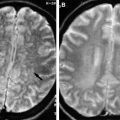Radiology provides valuable gross pathologic information about central nervous system (CNS) infections. Major categories of infectious lesions of the brain and spinal cord are recognized by imaging such as diffuse, focal, or multifocal. This article discusses the pathologic basis of these radiographic findings. It illustrates examples with gross and microscopic photographs of CNS infections, and the tissue reactions to these infections. Where the organism can spread within the CNS, and cellular responses to the organism underlie both the radiographic and pathologic findings.
- •
If an infectious cause is suggested at or before the time of biopsy, the surgeon should be notified to send cultures.
- •
Radiology provides valuable gross pathologic information about central nervous system (CNS) infections, and major categories of infectious lesions of the brain and spinal cord are recognized by imaging such as diffuse, focal, or multifocal.
- •
This article further discusses cellular responses to infections including meningitis, encephalitis, gliosis, and demyelination; and histologic features of CNS infections.
- •
Key features of viral, bacterial, fungal, treponemal, prion, and parasitic diseases are illustrated.
Stay updated, free articles. Join our Telegram channel

Full access? Get Clinical Tree




